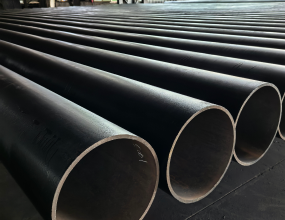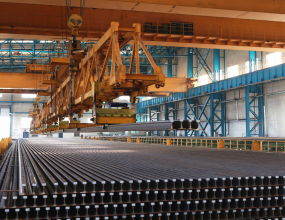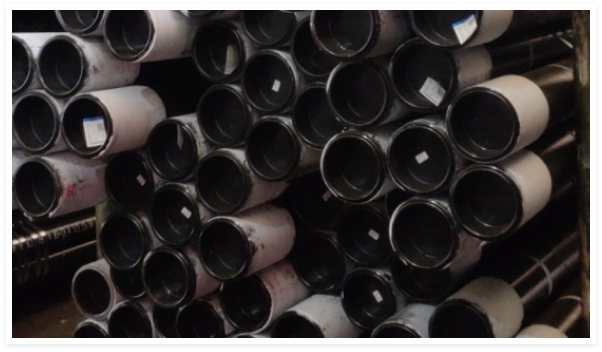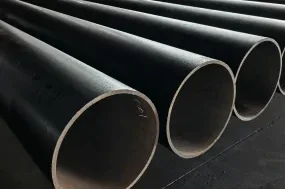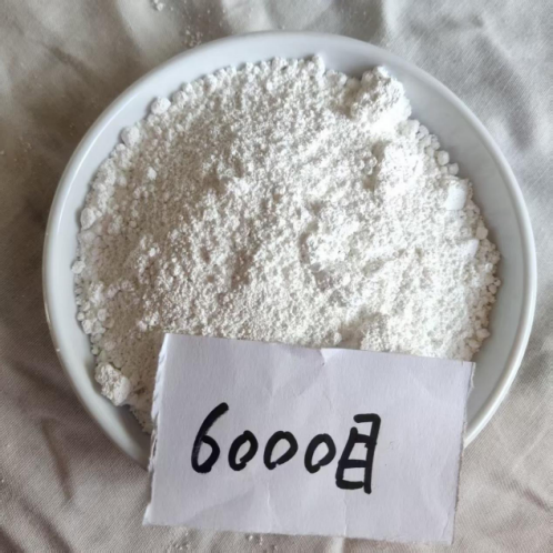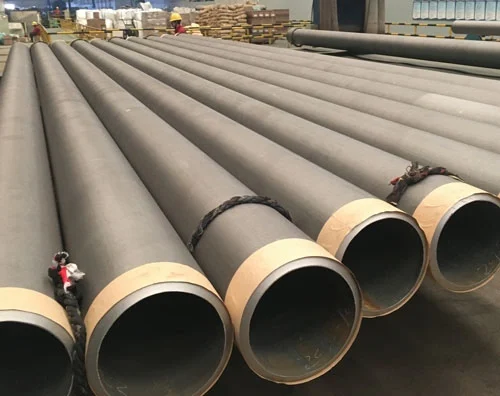
What is line pipe
Line pipes were compiled and released by the American Petroleum Institute, and were transmitted to my country through various channels. Now there are such pipelines all over the world, which can be said to be universal. The main mode of operation of the line pipe is actually to transport the oil, natural gas or water pumped out of the ground to the oil and gas industry enterprises through this line pipe.
The main purpose
People mainly use it for transportation of gas, water and oil in the petroleum and natural gas industry. Because of its excellent bearing capacity and hardness, it can be trusted by people when it is used.
specification
The specification of the line pipe is API SPEC 5L-2011. It is mainly two kinds of seamless and welded pipes. The pipe ends of the line pipe are divided into flat ends, threaded ends and socket ends. There are also many connection methods, namely end Welding, collar connection, socket connection, etc. The main materials for making this kind of line pipe are L245, L360, L418, L480, X65, X70, X80 and other steel grades, and the steel grades of different materials have different functions.
The pipeline steel pipe products of Baotou Steel Pipe Co., Ltd. have supplied batches of steel grades below X65, and the products have been successfully exported to Germany, Canada, Brazil, Singapore, Egypt, South Korea, the United Arab Emirates and other countries; X70 steel grade pipeline steel pipes have been successfully industrialized; X52 steel Grade cryogenic pipeline steel pipe has completed laboratory research work. With the increasing consumption of hydrogen sulfide-resistant pipeline steel pipes, in recent years, Baotou Steel has been devoting itself to the development of hydrogen sulfide-resistant pipeline steel pipes and offshore service pipeline steel pipes, among which L290NS hydrogen sulfide-resistant pipeline steel pipes have passed the performance evaluation test of Xi’an Pipe Materials Research Institute , and batch supply; L360QS has completed laboratory development work. As the 159PQF unit and 460PQF unit have been put into operation, Baotou Steel already has the technological conditions to produce high-grade hydrogen sulfide corrosion-resistant pipeline steel pipes and offshore service pipeline steel pipes.
Mechanical properties:
| Standard | Product Level | Steel grade | Yield Strength (min), Mpa | Tensile Strength(MPa) |
| API 5L GB/T9711.2 | PSL 1 | A or L210 | 210 | 335 |
| B or L245 | 245 | 415 | ||
| x42 or L290 | 290 | 415 | ||
| X46 or L320 | 320 | 435 | ||
| X52 or L360 | 360 | 460 | ||
| X56 or L390 | 390 | 490 | ||
| X60 or L415 | 415 | 520 | ||
| X70 | 483 | 565 | ||
| PSL 2 | BR or L245R | 245~450 | 415~760 | |
| X42R or L290R | 290~495 | 415~760 | ||
| BN or L245N | 245~450 | 415~760 | ||
| X42N or L290N | 290~495 | 415~760 | ||
| X46N or L320N | 320~525 | 435~760 | ||
| X52N or L360N | 360~530 | 460~760 | ||
| X56N or L390N | 390~545 | 490~760 | ||
| X60N or L415N | 415~565 | 520~760 | ||
| X65N or L450N | 425~566 | 525~760 | ||
| X70 or L480 | 484~565 | 565~768 | ||
| X80 | 552~690 | 621~827 |
Differences between PSL1 and PSL2 pipes are as follows;
1.Chemical Properties
2.Mechanical Properties
3.Manufacturing Methods
4.Inspection and Defect Repair
5.Certification & Traceability
1.Chemical Properties
| PARAMETER | PSL1 | PSL2 |
| Chemistry: Max C for Seamless pipe | 0.28% for grades ≥ B | 0.0024 |
| Chemistry: Max C for Welded pipe | 0.26% for grades ≥ B | 0.0022 |
| Chemistry: Max P | 0.03% for grades ≥ A | 0.0003 |
| Chemistry: Max S | 0.0003 | 0.0002 |
| Carbon equivalent: | Only when purchaser specifies SR18 | Maximum required for each grade |
2.Mechanical Properties
| PARAMETER | PSL1 | PSL2 |
| Yield strength, maximum | None | Maximum for each grade |
| UTS (Ultimate Tensile Strength) maximum | None | Maximum for each grade |
| Fracture toughness | None required | Required for all grades |
For PSL2 pipe, there is a limit on Maximum Yield & Ultimate Tensile Strength, whereas for PSL1 pipe, meeting the minimum requirements is sufficient. The second requirement that is mandatory for the PSL2 pipe is Fracture toughness which is not required for the PSL1 pipe.
3.The difference between PSL1 & PSL2 Pipes Manufacturing
| PARAMETER | PSL1 | PSL2 |
| Grade Range | A25 through X70 | B through X80 |
| Size range | 0.405″ through 80″ | 4.5″ through 80″ |
| Type of ends | Plain end, Threaded end,Bevelled end special coupling pipes | Plain end |
| Seam welding | All methods: continuous welding limited to A25 | All methods: except continuous welding and laser welding |
| Electric welds: welder frequency | No minimum | kHz minimum 100 |
| Heat treatment of electric welds | Required for grades >X42 | Required for all grades (B through X80) |
Here in this table, you can see the differences between PSL1 & PSL2 Pipes Manufacturing. PLS1 pipes are available in grades A25 through X70, whereas PSL2 pipes are available in Grade B through X80.
PSL1 pipes are available in sizes 0.405” to 80”, whereas the smallest diameter pipe available in PSL2 is 4.5” and the largest diameter is 80”.
4.Inspection and Defect Repair
| PARAMETER | PSL1 | PSL2 |
| Non-destructive inspection of Seamless | Only when purchaser specifies SR4 | SR4 mandatory |
| Repair by welding of pipe body plate, and skelp | Permitted | Prohibited |
| Repair by welding of weld seams without filler metal | Permitted by agreement | Prohibited |
Non-destructive inspection of a seamless pipe is mandatory for PSL2 pipe, whereas for PLS1 pipe, it is a supplementary requirement.
Repair of pipe body plate and skelp by welding is not allowed in PSL2 pipes, whereas it is allowed in PSL1 pipes. Similarly, weld repair without filler metal is not allowed in PSL2 pipes, whereas it is allowed with the purchaser’s permission in PSL1 pipes.
5.Certification & Traceability
| PARAMETER | PSL1 | PSL2 |
| Certification | Traceable only until all tests are passed | Certificates (SR15.1) mandatory |
| Traceability | Traceable only until all tests are passed unless SR15 is specified | Traceable after completion of tests (SR15.2) mandatory |
For PSL1 pipes, Traceability & Certification is not required beyond the point it passes all the required tests whereas, for PSL2 pipes, Traceability & Certification is mandatory.
In short PSL1 pipes are standard quality pipes for normal services, and PSL2 pipes are higher quality pipes than PSL1.
Pipeline pipe chemical element table:
| roduct Level | Steel grade | Chemical composition, % | ||||||||
| C | Mn | P | S | Si | V | Nb | Ti | CEpcm | ||
| PSL 1 | B or L245 | ≤0.28 | ≤1.20 | ≤0.030 | ≤0.030 | – | – | – | – | – |
| x42 or L290 | ≤0.28 | ≤1.30 | ≤0.030 | ≤0.030 | – | – | – | – | – | |
| X46 or L320 | ≤0.28 | ≤1.40 | ≤0.030 | ≤0.030 | – | – | – | – | – | |
| X52 or L360 | ≤0.28 | ≤1.40 | ≤0.030 | ≤0.030 | – | – | – | – | – | |
| X56 or L390 | ≤0.28 | ≤1.40 | ≤0.030 | ≤0.030 | – | – | – | – | – | |
| X60 or L415 | ≤0.28 | ≤1.40 | ≤0.030 | ≤0.030 | – | – | – | – | – | |
| X70 | ≤0.28 | ≤1.40 | ≤0.030 | ≤0.030 | – | – | – | – | – | |
| PSL 2 | BR or L245R | ≤0.24 | ≤1.20 | ≤0.025 | ≤0.015 | ≤0.40 | c | c | ≤0.04 | ≤0.25 |
| X42R or L290R | ≤0.24 | ≤1.20 | ≤0.025 | ≤0.015 | ≤0.40 | ≤0.06 | ≤0.05 | ≤0.04 | ≤0.25 | |
| BN or L245N | ≤0.24 | ≤1.20 | ≤0.025 | ≤0.015 | ≤0.40 | c | c | ≤0.04 | ≤0.25 | |
| X42N or L290N | ≤0.24 | ≤1.30 | ≤0.025 | ≤0.015 | ≤0.40 | ≤0.06 | ≤0.05 | ≤0.04 | ≤0.25 | |
| X46N or L320N | ≤0.24 | ≤1.40 | ≤0.025 | ≤0.015 | ≤0.40 | ≤0.07 | ≤0.05 | ≤0.04 | ≤0.25 | |
| X52N or L360N | ≤0.24 | ≤1.40 | ≤0.025 | ≤0.015 | ≤0.45 | ≤0.10 | ≤0.05 | ≤0.04 | ≤0.25 | |
| X56N or L390N | ≤0.24 | ≤1.40 | ≤0.025 | ≤0.015 | ≤0.45 | ≤0.10 | ≤0.05 | ≤0.04 | ≤0.25 | |
| X60N or L415N | ≤0.24 | ≤1.40 | ≤0.025 | ≤0.015 | ≤0.45 | ≤0.10 | ≤0.05 | ≤0.04 | – | |
| X65N or L450N | ≤0.24 | ≤1.40 | ≤0.025 | ≤0.015 | ≤0.45 | ≤0.10 | ≤0.05 | ≤0.04 | – | |
| X70N | ≤0.24 | ≤1.40 | ≤0.025 | ≤0.015 | ≤0.45 | ≤0.10 | ≤0.05 | ≤0.04 | – | |
| X80 | ≤0.24 | ≤1.40 | ≤0.025 | ≤0.015 | ≤0.45 | ≤0.10 | ≤0.05 | ≤0.04 | – | |
API 5L line pipe standard:
API SPEC 5L——American Petroleum Institute Standard
GB/T9711——China National Standard
There are two standards for API 5L line pipe: PSL1 and PSL2. Although the two standards have only one word
The difference is huge, and the content is also very different. PSL2 has a higher quality level than PSL1. Both standard levels have different levels of inspection requirements, chemical composition requirements, mechanical performance requirements, and mechanical performance requirements. When ordering according to the API 5L line pipe standard, the purchaser needs to indicate the standard level (PSL1 or PSL2) according to the basic contract terms such as product specification, steel grade, and order quantity. Under normal circumstances, if the contract does not mention the standard level, the manufacturer will produce according to the standard of PSL1.
- PSL is the abbreviation of Product Specification Level. The product specification level of line pipe is divided into PSL1 and PSL2, and it can also be said that the quality level is divided into PSL1 and PSL2. PSL2 is higher than PSL1. These two specification levels are not only different in inspection requirements, but also in chemical composition and mechanical properties. Therefore, when ordering according to API 5L, the terms in the contract should not only indicate the usual indicators such as specifications and steel grades. , must also indicate the product specification level, that is, PSL1 or PSL2. PSL2 is stricter than PSL1 in terms of chemical composition, tensile properties, impact energy, non-destructive testing and other indicators.
- PSL1 does not require impact performance. For all steel grades except x80 of PSL2, the average value of Akv at 0°C in the full size: longitudinal ≥ 41J, transverse ≥ 27J. X80 steel grade, full-scale 0℃ Akv average: longitudinal ≥ 101J, transverse ≥ 68J.
- The line pipe should be subjected to hydrostatic test one by one, and the standard does not allow non-destructive substitution of water pressure, which is also a big difference between the API standard and the Chinese standard. PSL1 does not require non-destructive testing, and PSL2 should be non-destructive testing one by one.
American Petroleum Institute Standard (API SPEC 5L ) Line Pipe Specification Table
| Nominal Size | Outside Diameter | Wall Thickness | Plain-end Weight | |||
| inch | mm | inch | mm | lb/ft | kg/m | |
| 0.405 | 0.405 | 10.29 | 0.095 | 2.4 | 0.31 | 0.47 |
| 0.54 | 0.54 | 13.72 | 0.088 | 2.2 | 0.43 | 0.62 |
| 0.54 | 13.72 | 0.119 | 3.0 | 0.54 | 0.79 | |
| 0.675 | 0.675 | 17.15 | 0.091 | 2.3 | 0.57 | 0.84 |
| 0.675 | 17.15 | 0.126 | 3.2 | 0.74 | 1.10 | |
| 0.84 | 0.84 | 21.34 | 0.109 | 2.8 | 0.85 | 1.28 |
| 0.84 | 21.34 | 0.147 | 3.7 | 1.09 | 1.61 | |
| 1.05 | 1.05 | 26.67 | 0.113 | 2.9 | 1.13 | 1.70 |
| 1.05 | 26.67 | 0.154 | 3.9 | 1.48 | 2.19 | |
| 1.315 | 1.315 | 33.4 | 0.133 | 3.4 | 1.68 | 2.52 |
| 1.315 | 33.4 | 0.179 | 4.6 | 2.17 | 3.21 | |
| 1.660 | 1.660 | 42.2 | 0.145 | 3.7 | 2.72 | 3.43 |
| 1.660 | 42.2 | 0.191 | 4.9 | 3.00 | 4.51 | |
| 1.900 | 1.660 | 42.2 | 0.382 | 9.7 | 5.22 | 7.77 |
| 1.900 | 48.3 | 0.145 | 3.7 | 2.72 | 4.07 | |
| 1.900 | 48.3 | 0.200 | 5.1 | 3.63 | 5.43 | |
| 1.900 | 48.3 | 0.400 | 10.2 | 6.41 | 9.58 | |
| 2 3/8 | 2.375 | 60.3 | 0.109 | 2.8 | 2.64 | 3.97 |
| 2.375 | 60.3 | 0.125 | 3.2 | 3.00 | 4.51 | |
| 2.375 | 60.3 | 0.141 | 3.6 | 6.36 | 5.03 | |










